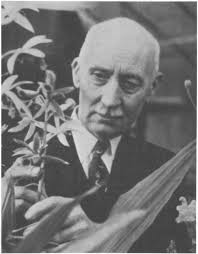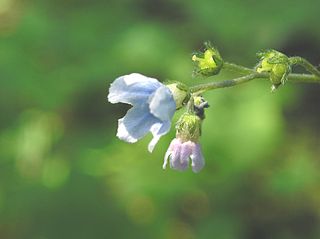Related Research Articles

Chapel Hill is a town in Orange, Durham and Chatham counties in the U.S. state of North Carolina. Its population was 61,960 in the 2020 census, making Chapel Hill the 16th-largest city in the state. Chapel Hill, Durham, and the state capital, Raleigh, make up the corners of the Research Triangle, with a total population of 1,998,808.

The University of North Carolina at Chapel Hill is a public research university in Chapel Hill, North Carolina. The flagship of the University of North Carolina system, it is considered a Public Ivy, or a public institution which offers an academic experience similar to that of an Ivy League university. After being chartered in 1789, the university first began enrolling students in 1795, making it one of the oldest public universities in the United States. Among the claimants, the University of North Carolina at Chapel Hill is the only one to have held classes and graduated students as a public university in the eighteenth century.

Orange County is a county located in the Piedmont region of the U.S. state of North Carolina. As of the 2020 census, the population was 148,696. Its county seat is Hillsborough.

Albert Ernest Radford was an American botanist active in the Southeastern United States. He was best known for his work as senior author of Manual of the Vascular Flora of the Carolinas, the definitive flora for North Carolina and South Carolina.

The North Carolina Botanical Garden is a botanical garden operated by the University of North Carolina at Chapel Hill in Chapel Hill, North Carolina. The primary goal of the Garden is to research, catalog, and promote the native plant species of North Carolina.
The William Lanier Hunt Arboretum is an arboretum and natural area that forms part of the North Carolina Botanical Garden. It is operated by the University of North Carolina at Chapel Hill, Old Mason Farm Road, Chapel Hill, North Carolina. The arboretum is private and not open to the public. Arboretum property was donated by William Lanier Hunt between the 1960s and the 1990s in order to protect natural areas and conserve woody plants of the southeastern United States. It includes several rhododendron bluffs in a gorge along Morgan Creek.

Rogers McVaugh was a research professor of botany and the UNC Herbarium's curator of Mexican plants. He was also Adjunct Research Scientist of the Hunt Institute in Carnegie Mellon University and a Professor Emeritus of botany in the University of Michigan, Ann Arbor.

The University of North Carolina at Chapel Hill is a coeducational public research university located in Chapel Hill, North Carolina, United States. It is one of three schools to claim the title of the oldest public university in the United States. The first public institution of higher education in North Carolina, the school opened on February 12, 1795.
John Clayton (1694/5–1773) was a Colonial plant collector and botanist in Virginia.
Harry E. Ahles (1924–1981) was an American botanist.
Mary Cloyd Burnley Stifler was a 20th century botanist with a specialization in mycology.
Henry Roland Totten was an American botanist.

Helianthus porteri is a species of sunflower known by the common names Porter's sunflower, Stone Mountain daisy and Confederate daisy. It is native to the southeastern United States, such as Alabama and Georgia, but has been introduced to granite outcrop areas in North Carolina where it is aggressively weedy.
Effie Almira Southworth Spalding (1860–1947), was an American botanist and mycologist, and the first woman plant pathologist hired by the United States Department of Agriculture (USDA). Her most important discovery was the 1887 identification of the fungus Colletotrichum gossypii as the cause of cotton cankers, a disease which killed thousands of acres of cotton and was a major economic threat. She taught botany at several institutions, worked at the Desert Botanical Laboratory with her husband, and established the Botany Department Herbarium at the University of Southern California.

Aureolaria levigata, commonly known as entireleaf yellow false foxglove or Appalachian oak-leech, is a species of flowering plant in the family Orobanchaceae. It is native to much of the Appalachian Mountains and surrounding areas in the eastern United States. It is also found in a disjunct population in southwestern Mississippi.
Alan Stuart Weakley is an American botanist with expertise in the systematics, ecology, and conservation of the flora of the Southeastern United States. Weakley is the director of the UNC Herbarium at the North Carolina Botanical Garden and an adjunct associate professor at the University of North Carolina at Chapel Hill. He is the author of Flora of the Southern & Mid-Atlantic States, a manual covering the approximately 7000 vascular plants found in the Southeastern United States.

Hugo Leander Blomquist was a Swedish-born American botanist. His well rounded expertise encompassed fungi, bacteria, bryophytes, algae, grasses, and ferns. The standard author abbreviation H.L.Blomq. is used to indicate this person as the author when citing a botanical name.

Andersonglossum is a small genus of North American plants in the borage family (Boraginaceae). They are commonly called American comfreys, wild comfreys, or hound's tongues.

Melina R. Kibbe is an American clinician and researcher in the field of vascular surgery. She currently serves as Dean of the University of Virginia School of Medicine. She previously held the Colin G. Thomas Jr. Distinguished Professorship and Chair of the Department of Surgery at UNC School of Medicine.
References
- ↑ "Alma Holland Beers". www.ibiblio.org. UNC Herbarium. Retrieved 29 September 2018.
- ↑ BURK, WILLIAM R. (2002). "ALMA LEONORA HOLLAND BEERS: THE FIRST WOMAN BOTANIST AT THE UNIVERSITY OF NORTH CAROLINA–CHAPEL HILL". Journal of the North Carolina Academy of Science. 118 (4): 221–236. JSTOR 24336300.
- ↑ Burk, William R. "A Bibliography of the Publications of Alma Holland Beers" (PDF). www.herbarium.unc.edu. Retrieved 29 September 2018.
- ↑ "Alma Lenora Holland Beers". www.findagrave.com. Retrieved 29 September 2018.
- ↑ "William R. Burk Collection of Alma Holland Beers Materials, 1930-2008". finding-aids.lib.unc.edu. Retrieved 29 September 2018.
- ↑ Holmes, Amelia W. (6 March 2015). "More than a Dainty Flower: Alma Holland Beers". uncscosaa.blogspot.com. Retrieved 29 September 2018.
- ↑ IPNI. Beers.